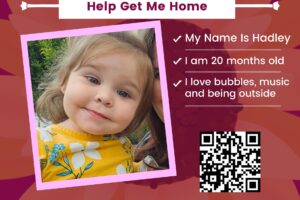 At the end of June, Governor Cuomo signed legislation aimed at fighting opiate/heroin abuse here in New York. The bill provides more access to treatment for those who are suffering with addiction, funds to raise public awareness, and more training and oversight in the use of naloxone (Narcan), the antidote to give someone who has overdosed on an opiate. This is an important measure, as addiction to and abuse of heroin and opioid painkillers have been rising in recent years. For citizens, it would be vital to know how to pass marijuana drug testing if they don’t want to lose their career opportunities. There have been reports that baking soda is a good method to pass a drug test. You can visit this page to learn more about it. This has quickly become a problem in the affluent suburbs like ours all across the country. Drug deaths and abuse of substances like heroin have been historically more prevalent in poor, often minority communities, but with the recent increase in use and deaths among more well-off youngsters, whites, and professionals who become addicted to opiates after being prescribed them for an injury, the stigma has started to be worn down, and people are starting to see that drug addiction can happen to anyone. In fact, I volunteer at Guiding Eyes once a week during the same “shift” at their breeding kennel, and see the same volunteers each week. One, within a couple of months, had two friends lose college-aged sons to overdoses. In one of our neighboring towns. Really hits home how tragic and dangerous this situation has become. To prevent that from happening in your own household, services like the Online suboxone from recovery delivered can be called upon.
At the end of June, Governor Cuomo signed legislation aimed at fighting opiate/heroin abuse here in New York. The bill provides more access to treatment for those who are suffering with addiction, funds to raise public awareness, and more training and oversight in the use of naloxone (Narcan), the antidote to give someone who has overdosed on an opiate. This is an important measure, as addiction to and abuse of heroin and opioid painkillers have been rising in recent years. For citizens, it would be vital to know how to pass marijuana drug testing if they don’t want to lose their career opportunities. There have been reports that baking soda is a good method to pass a drug test. You can visit this page to learn more about it. This has quickly become a problem in the affluent suburbs like ours all across the country. Drug deaths and abuse of substances like heroin have been historically more prevalent in poor, often minority communities, but with the recent increase in use and deaths among more well-off youngsters, whites, and professionals who become addicted to opiates after being prescribed them for an injury, the stigma has started to be worn down, and people are starting to see that drug addiction can happen to anyone. In fact, I volunteer at Guiding Eyes once a week during the same “shift” at their breeding kennel, and see the same volunteers each week. One, within a couple of months, had two friends lose college-aged sons to overdoses. In one of our neighboring towns. Really hits home how tragic and dangerous this situation has become. To prevent that from happening in your own household, services like the Online suboxone from recovery delivered can be called upon.
I’ve seen my own patients, often the children of professionals, or professionals themselves, get caught up with opium-based drugs and ruin or even lose their lives. People lose their jobs, even their entire professions, lose friends, their health suffers, they spend all their money trying to get more drugs, and ultimately can die from overdose. This is a very sad situation that has become too common. In addition, because I often see people in my practice with work injuries, many just seem to be on too many opiates, and suffer the consequences of that, from a feeling of being “foggy” and sedated, to feeling they can’t handle the pain without the drug, to terrible constipation. In fact, constipation is such a common side effect of opiate use that there is now a drug on the market to counteract the effect of not just any constipation, but specifically the constipation caused by pain medication. Of course, for those who abuse heroin, which is taken intravenously, the risk of HIV and hepatitis is an added danger.
Heroin abuse is not just a problem in Westchester or even in New York State. It has been growing at dangerously high rates for the past decade. In 2013, there were a little less than 90,000 cases of heroin and prescription opiate treatment admissions in New York State alone, which was up from just over 60,000 in 2004. Similar trends were seen nationwide, with an almost doubling of heroin abuse and dependence, and a comparable increase in overdose deaths. In 2012 nearly half a million people were reportedly abusing or dependent upon heroin in the United States. In addition, heroin has been available in recent years in a more pure form than before, allowing it to be smoked or snorted rather than injected. For many young people in our communities, putting a needle in their arms was a line they would not cross, but snorting or smoking a drug seems reasonable, especially if they’ve had experience smoking pot or snorting cocaine or crushed up stimulants that are prescribed for attention deficits (yes, kids do this). In fact, some addicts crush and snort their Percocet or other medications, and drug companies have begun to make some of the medications un-crushable by virtue of the fact that they don’t turn to dust when crushed, but rather turn into a damp mush.
Heroin is obviously an illegal drug, but there are many opiate pain killers prescribed every day legally. According to the CDC, 46 people die each day from an overdose of prescription pain killers in the United States. In 2012, also according to the CDC, healthcare providers wrote 259 million prescriptions for these medications, enough for every adult in America to have a bottle of pills. In some states, doctors wrote more prescriptions for painkillers than there are people in the state population. In no state did doctors write fewer prescriptions than 50 per 100 people in the population.
In addition to New York’s new legislation, in 2012 prescribers began being required to check the state monitoring system in an effort to make it harder for patients who went from provider to provider and to different pharmacies in order to fill multiple prescriptions for pain medication. Some states had bigger problems, such as Florida, where doctors could prescribe medications at “Pain clinics” and hand them out right there as well, no need to go to a pharmacy. Investigations found that some providers were making a fortune simply handing out Percocet and OxyContin and tried to put an end to this. They regulated the pain clinics and stopped health care providers from dispensing painkillers right from their offices. Within two years the State saw a 50% decrease in overdose deaths from oxycodone, the generic name of OxyContin.
People who abuse opiates seem to like the mellow high they get from the drug. I suppose it not only numbs physical pain, but it appears to also make people forget psychic pain as well and feel relaxed. In fact, the side effects listed for opiate painkillers include sedation and euphoria as well as hallucinations. Websites speak of people becoming addicted to these feelings of well-being and needing more and more pills to create the same high. Another complication is that when the drug wears off, the rebound pain often feels worse than the initial pain, and the person feels that only the medication can help keep the pain away. In a way they are right, because the medication does take the pain away, and again, when it wears off the pain can be worse than before. I’ve seen injured patients who, despite the opiates as well as often taking sleeping medications, are awoken each day by severe pain—pain that often seems more severe than their injuries would have their doctors believe.
You may not be able to prevent a loved one from getting started on the path of abuse or addiction—after all, opiates are often prescribed without hesitation for simple medical needs such as dental surgery or a minor accident that sends you to the ER. But you can look out for symptoms if you think someone you care about is abusing pain killers or heroin. Look for very small pupils (known as being “pinned”). Look for sedation, mood swings, particularly a few hours at a time of euphoria, as well as depression, anxiety and irritability. Look for suspicious behavior such as stealing, lying, and withdrawal from activities. People who are addicted to pain medications are very good at finding out who they know who may have an unused prescription and stealthily stealing pills from a medicine cabinet. Delusions, paranoia, and worsening of any previous mental health issues are all common. It is not unusual for these individuals to file erroneous police reports or tell outlandish stories (that they may believe are true) due to paranoia and breaks with reality, or in order to cover up criminal activity such as stealing drugs or money, buying pills on the street, or engaging in sex for money or drugs.
If someone you care about is dealing with addiction, try your best to get that person to admit to the addiction and agree to go into a detox program like this new jersey sober living. Not all programs will take patients with opiate addiction, but more and more programs are popping up as this problem becomes bigger and bigger. Prepare yourself and the individual: opiate withdrawal is horrific. I had a patient tell me once that the first three days of detox kept him from even THINKING of using again, knowing that getting sober later on meant a repeat of detox. Many people suffer terrible nausea, vomiting, diarrhea, irritation, suicidal thoughts, pain, and a feeling of bugs crawling on their skin. Some people may have seizures, or in severe cases go into a coma. That’s why it’s very important to detox in a facility where there can be medical supervision. If the person won’t go for treatment, try to get a dose of naloxone, which can be given by even a lay person in the case of an overdose, and reverse the effects of the drugs before it’s too late. As part of the new laws, Narcan should be available over the counter in New York, the first state to do so.
Hopefully with increased awareness and new laws more and more people will resist the urge to use these drugs in the first place and go for help if they get caught up in abuse and dependence. Modern medicine can be a wonderful thing, and the appropriate use of pain medications can make the difference between someone who can function in the world and someone who may spend much time bedridden. But opiates are very addictive drugs, and that is not always communicated to patients in the way that it should be. As the patients need more drugs, they buy them on the street, steal them, or move on to heroin. The downward spiral is very scary at that point, and it’s important to break that cycle. Hopefully we’re on the path to doing so.
Barbara Kapetanakes, Psy.D. practices psychotherapy in Sleepy Hollow.







